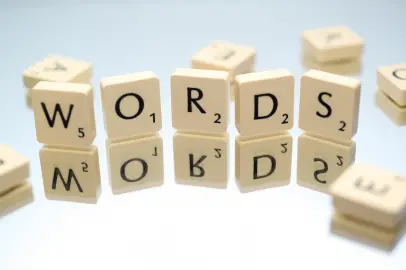A company’s logo is one of the key parts of its overall marketing identity, and thusly should be accurately representative of your business. While this may sound obvious, there are quite a few hidden tricks to developing a logo that sends the perfect message to potential customers. Your logo is going to be one of the most memorable aspects of your business, and it must say exactly what you want it to say. Whether you have the perfect logo already or are just beginning to consider creating one.
Check out more Designing a Logo for Your Business click HERE.
5 Things That You Should Consider When Designing a Logo for Your Business

Here are 5 things that you should consider when designing a logo for your business.
1. Color

While your favorite color may be firetruck red, making your logo that color may not be beneficial to the brand you’re trying to develop. Color has power and inevitable associations, which can be used to your advantage when understood.
Cooler colors, such as blues and greens, are often calming, whereas warmer colors, like yellows and reds, are stimulating and social.
Mixing warm and cool colors can often be visually off-putting, so sticking to one palette will communicate a clearer message. Logos with only one or two colors are often very powerful and memorable, such as the golden arches of McDonald’s.
Another consideration is that in some situations, your logo will not appear in color, so it should still be functional and powerful if it’s in black and white too.
Check out:
| 18+ Event Ticket Templates psd |
| 13+ Square and Business Flyers Mockups |
| 10+ Best Split Screen WordPress Themes For Creative People |
2. Schemas
Schemas are a collection of information in a category or for a concept and rely on prerecorded information already recorded in your brain. For example, when someone says “banana,” you immediately know they’re talking about a yellow fruit.
Schemas for more complex ideas build upon schemas of smaller ideas and can be used in a logo to communicate vast amounts of information in a compact image. There’s a reason many law firms have logos that include balanced scales on them- the schema of a balanced scale communicates justice and equality and lawfulness.
3. Finding Examples
Creating a unique logo is crucial, but you don’t need to do it from scratch. There are a variety of other logos already in the world that can serve as inspiration, as well as unclaimed designs that are free for use.
You can access free vectors without any strings attached from 4Vector, or you can use existing brand logos that you find aesthetically appealing and create a new design from the old one.
It’s important to avoid plagiarizing another company, so using commercial vectors or changing an existing logo significantly is the best way to avoid plagiarizing.
4. Words

Words are powerful. They’re also easy to over-use. One common thread with brands that use words in their logos is that the logo is simple and minimalistic. For example, Nike’s logo. It can be used as a stand-alone but is often accompanied by the brand’s slogan, and the words add to the potency of the message. Other logos, such as Visa, are just the brand name with a design flair.
However, as soon as you go beyond a few words, your logo turns into a slogan and is no longer a logo. While working your slogan into your logo is possible, it rarely works with more than a handful of words. When trying to do this, it’s imperative to avoid complex and bright imagery, since the logo becomes too busy and no longer conveys a message.
5. Flexible
There are many ways a logo is viewed and presented- computer screens, phones, stickers, television, magazines, billboards, and so on. No matter the media, the logo should be adaptable and recognizable. It needs to be practical. If it has to be increased in size, it should still retain the image and message.
If it needs to be grayscale, it should still retain the image and message. If it’s showing on the screen of a smartphone or projected in an auditorium, the resolution difference shouldn’t matter to the image and message.
This often requires a reduction in detail work, but a strong logo shouldn’t be overly complex in the first place.
Conclusion
There’s a lot to be said for a strong logo. They’re often the face of the company and one of the main marketing details that truly sticks in the memory of viewers. Ensuring that your logo communicates the message you want it to can be difficult, but the importance cannot be overstated.
By considering things like color, schemes, resources, word usage, and flexibility, developing the perfect logo is achievable.
If you have any queries or suggestions feel free to reach out in the comments section below.
Check out more content like this click HERE.


